Bad sales leads can drain resources, lower conversion rates, and stall business growth. Learn how to effectively cleanse your lead data using proven techniques, improve lead quality, boost sales performance, and ensure your business operates with enhanced efficiency.
If you’re dealing with bad sales leads, you already know how they clutter your sales funnel and waste resources. The real challenge is cleansing bad sales leads efficiently. Outdated contact details, low engagement, and duplicate entries make it hard for your team to focus on high-quality prospects. Manual lead cleansing can be tedious, prone to errors, and time consuming, leaving many businesses struggling to maintain a clean database.
Contents
The solution lies in adopting automated lead cleansing techniques like data validation, lead scoring and regular database updates. These processes streamline lead management and ensure your team focuses only on valuable prospects. To further simplify the process, partnering with lead cleansing service providers can bring in the expertise and tools needed to remove bad leads and reduce duplicates. This helps improve data hygiene by providing your sales team with clean, actionable data to work with.
In this article, we’ll explore the challenges of lead cleansing and provide solutions to help you optimize your sales pipeline.
What are Bad Sales Leads?
| Aspect | Details |
| Bad Sales Leads | Prospects with little to no chance of converting into paying customers. |
| Key Characteristics |
|
| Causes |
|
| Solution |
|
| Outcome | Improved lead quality, better sales performance, and enhanced data credibility. |
Cleanse your data and develop strong hygiene practices to ensure a steady flow of high-quality data.
Contact us today! »How Do Bad Sales Leads Affect My Sales Pipeline?
The impact of bad sales leads can significantly undermine both short-term performance and long-term business success:
- Client Dissatisfaction and Lost Contracts: Leads to contract cancelations, non-renewals, and refund requests.
- Damaged Reputation and Loss of Market Credibility: Negative word-of-mouth, loss of referrals, and reduced credibility in the market.
- Revenue Loss and Lower Profit Margins: Decrease revenue, lower profit margins, and increase operational costs.
- Increased Churn Rate: Leads to higher customer turnover.
- Wasted Resources: Wastes time, effort, and financial resources chasing unqualified leads.
- Damaged Client Relationships: Blacklisting and loss of repeat business opportunities.
- Legal and Compliance Risks: Increased exposure to legal issues and compliance violations.
How to Identify Bad Sales Leads Early
Spotting bad sales leads early is key to maintaining a healthy sales pipeline and optimizing your team’s efforts. Keeping an eye on certain bad lead signs and certain checkpoints helps maintain data hygiene.
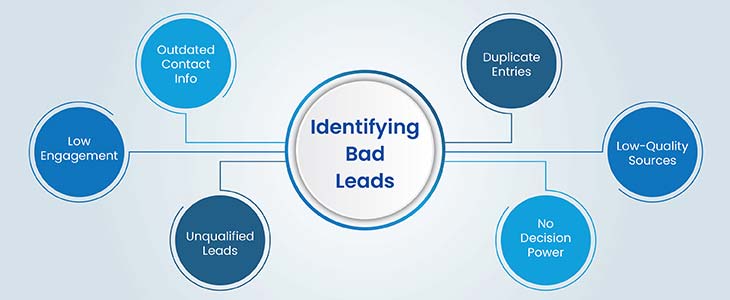
Here are a few signs to watch for:
- Inaccurate or Outdated Contact Information: Double-check contact details like email addresses and phone numbers. Leads with incorrect or outdated information are often unqualified and unlikely to convert.
- Low Engagement Levels: Monitor lead engagement by tracking email opens, clicks, and website visits. Leads that show little to no interaction typically indicate low interest or poor potential.
- Unqualified or Irrelevant Leads: Ensure the lead matches your ideal customer profile (ICP). If a lead’s needs or industry don’t align with your product or service, it’s a sign they’re unqualified.
- Duplicate Leads: Use tools to regularly check for duplicate entries in your CRM. Duplicates can clutter your system and waste time, creating confusion during outreach.
- Leads from Low-Quality Sources: Evaluate where your leads are coming from. Leads from unreliable or low-quality sources often result in poor conversions and wasted efforts.
- Lack of Decision-Making Power or Budget: Early in the process, determine if the lead has the authority to make purchasing decisions and the budget to support them. If not, they’re less likely to advance through the sales funnel.
Eliminate irrelevant sales data that doesn’t effectively match your target audience.
Contact us today! »How to Cleanse Bad Sales Leads – 5 Proven Techniques
Cleansing bad sales leads is essential to maintaining a healthy and efficient sales funnel. We’ll explore five proven lead-cleansing techniques to help you identify and remove bad leads, improve lead quality, and enhance the overall efficiency of your sales efforts.
1. Perform Data Audits to Remove Bad Sales Leads
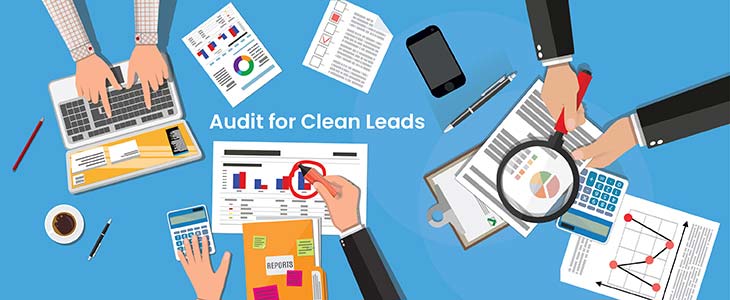
Regular data audits are the foundation of best practices for effective lead cleansing. A thorough audit involves reviewing your CRM and lead database to identify bad sales leads, such as incorrect contact data, outdated information, or leads that no longer fit your ideal customer profile. Data audits help uncover duplicate leads and identify prospects with low engagement, ensuring your data is clean and actionable.
Process
- Review CRM records and identify leads with incomplete or outdated information.
- Use automated data validation tools that flag duplicate entries or prospects with incorrect contact data.
- Implement data integrity checks and run batch processes to ensure regular updates and data accuracy across your database.
Impact: Regular data audits remove bad leads before they enter your sales funnel, ensuring that your team focuses on prospects with the highest potential. This boosts overall data hygiene and keeps your database clean, allowing for more efficient sales processes.
For instance, a B2B data aggregator partnered with a data management provider to validate, update and enrich a database of 50 million business records. The ongoing audits and updates, powered by automation, manual research, and rule-based validation, helped them manage fast-paced data decay and ensure data accuracy. This process allowed them to maintain a robust, high-performing database and offer intelligent prospecting solutions to their clients.
Pro Tip: Schedule data audits quarterly or semi-annually, integrating them with CRM workflows to stay on top of lead quality and maintain a clean pipeline.
2. Leverage Lead Scoring for Better Qualification
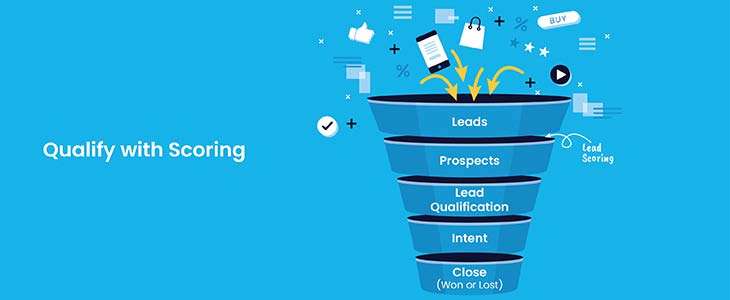
Lead scoring is a powerful tool for identifying bad sales leads before they can negatively impact sales efforts. Lead scoring models assign values to prospects based on their behavior and demographic information, helping you prioritize the most promising leads while filtering out those that are less likely to convert.
Process
- Create a scoring system based on key metrics, such as engagement levels (e.g., website visits, email opens) and demographic fit (e.g., job role, industry).
- Leads that score below a certain threshold are flagged as low priority, helping your team avoid wasting time on unqualified leads.
Impact: Using lead scoring ensures that only high-potential leads move forward in the sales funnel, improving the efficiency of your sales team and reducing wasted efforts on unqualified prospects. It also enhances lead quality by filtering out low-scoring leads early in the process.
Tip: Automate lead scoring by integrating it with your CRM, ensuring that the system updates in real time as new data comes in.
3. Use Data Enrichment to Improve Lead Quality

Data enrichment is a key strategy for validating and improving the quality of your leads. It involves filling in missing data and appending valuable information, such as company size, job role, or annual revenue, to incomplete lead profiles. With access to the right tools and resources, this process helps ensure that your sales team is working with a more complete and accurate set of data, enabling better targeting and decision making. Regular enrichment also minimizes errors and enhances the overall quality of your lead database for optimal sales outcomes.
Process
- Use data enrichment tools or partner with third-party providers to fill in missing information and correct incorrect contact data.
- Continuously update lead profiles to keep them accurate and relevant.
Impact: By enriching your data, you not only improve the accuracy of your lead database, but also enhance the lead quality of your prospects. Leads with complete profiles are easier to qualify, helping your sales team focus on those likeliest to convert.
For instance, a California-based video communication company partnered with a data enrichment provider to update and enrich over 120,000 customer profiles in two months. This helped improve segmentation and targeting for upselling. By updating missing fields like company size and location, they achieved more accurate marketing and saw significant improvements in client engagement.
Tip: Automate data enrichment to keep your lead information current and accurate in real time.
4. Implement Lead Cleansing Techniques to Cleanse Bad Leads
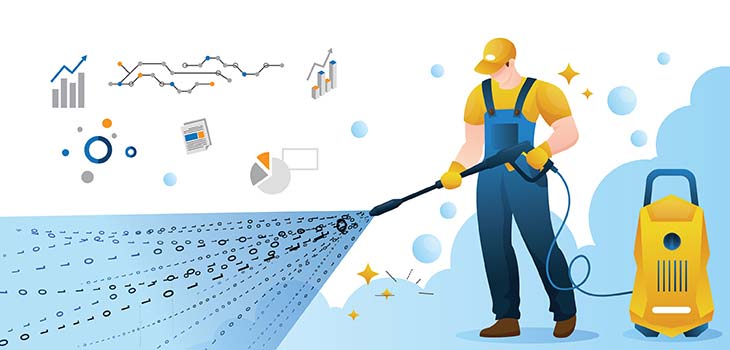
Lead cleansing is the active process of removing unqualified, irrelevant or duplicate leads from your database. This involves identifying bad sales leads – those that are inaccurate, outdated or irrelevant—and taking action to remove or update them. With the support of data validation experts and automated tools, this process becomes more efficient, ensuring that your database remains clean and accurate. Regular cleansing helps your sales team focus on high-quality leads, improving overall pipeline health and sales performance.
Process
- Identify leads with incorrect contact data or low engagement.
- Remove duplicate leads and validate the accuracy of the remaining records.
- Regularly cleanse your database to ensure ongoing data hygiene.
Impact: By cleansing bad sales leads from your pipeline, you ensure that your team spends time on prospects with the highest conversion potential. This not only improves efficiency, but also enhances the accuracy of your sales forecasts and overall pipeline health.
For instance, a lead generation company in the USA partnered with a data aggregator to build accurate email lists to improve lead quality through web research. The company faced challenges such as rapid data decay, outdated email addresses, and maintaining the accuracy of collected information. By implementing a structured process that involved standardizing, cleansing, validating and appending data collected through web research, the client achieved a perfect mailing list, allowing them to improve marketing campaigns, make timely announcements, and distribute surveys more effectively.
Marketing teams were able to concentrate on contemplating or developing strategies rather than collecting and validating data from the Internet.
Tip: Use automated lead cleansing tools that run on a schedule to prevent bad leads from building up in your database.
5. Establish a Feedback Loop to Enhance Lead Quality
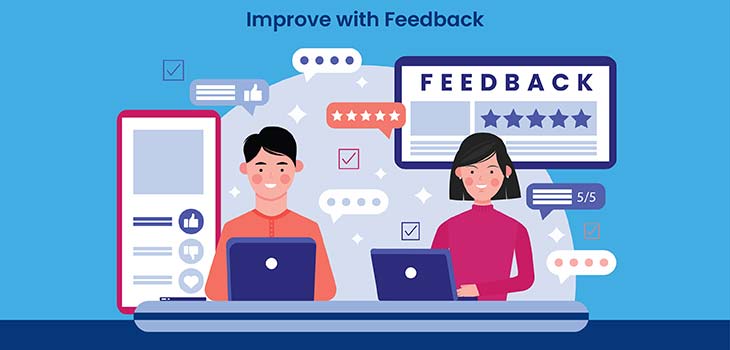
A strong feedback loop between your sales and marketing teams is essential for maintaining lead quality and ensuring that bad leads are flagged and dealt with early. By sharing information on lead performance, both teams can work together to refine their processes and prevent bad leads from entering the sales funnel.
Process
- Sales teams provide feedback on the lead quality generated by marketing, helping them refine targeting and nurturing strategies.
- Marketing adjusts lead-generation efforts based on sales insights to ensure that future leads are better qualified.
- Both teams collaborate to identify patterns in bad leads and adjust their processes accordingly.
Impact: A strong feedback loop improves the alignment between sales and marketing, leading to better lead qualifications and fewer bad leads entering the sales funnel. It also helps build a more efficient pipeline in which both teams work toward the same goal of converting high-quality leads.
Tip: Schedule regular meetings between sales and marketing to ensure constant communication and process improvements.
By implementing these five proven techniques, you can effectively cleanse bad sales leads, improve the overall lead quality, and ensure that your sales funnel is optimized for success. These strategies will help you maintain data hygiene, reduce wasted resources, and drive better results.
Additionally, outsourcing data cleansing can be a smart move. Various data cleansing companies offer specialized services and advanced tools, ensuring a more efficient and accurate cleansing process. This allows your internal teams to focus on high-priority tasks, while experts handle the complexities of maintaining clean, high-quality data.
Conclusion
Bad sales leads can significantly hinder sales efficiency, leading to wasted time, reduced conversion rates and inaccurate sales forecasts. Unqualified, outdated or duplicate leads clog your sales funnel, making it harder for your team to focus on high-potential prospects.
By regularly cleansing your sales leads through data audits, lead scoring, and data enrichment you ensure that your pipeline remains clean, accurate and optimized for success. To maintain high conversion rates and maximize your team’s efficiency, make lead cleansing a routine part of your sales process.
Fix bad leads to drive results and stop them from hurting your sales.
Contact us today! »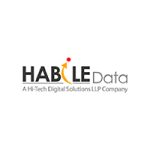
HabileData is a global provider of data management and business process outsourcing solutions, empowering enterprises with over 25 years of industry expertise. Alongside our core offerings - data processing, digitization, and document management - we’re at the forefront of AI enablement services. We support machine learning initiatives through high-quality data annotation, image labeling, and data aggregation, ensuring AI models are trained with precision and scale. From real estate and ITES to retail and Ecommerce, our content reflects real-world knowledge gained from delivering scalable, human-in-the-loop data services to clients worldwide.






